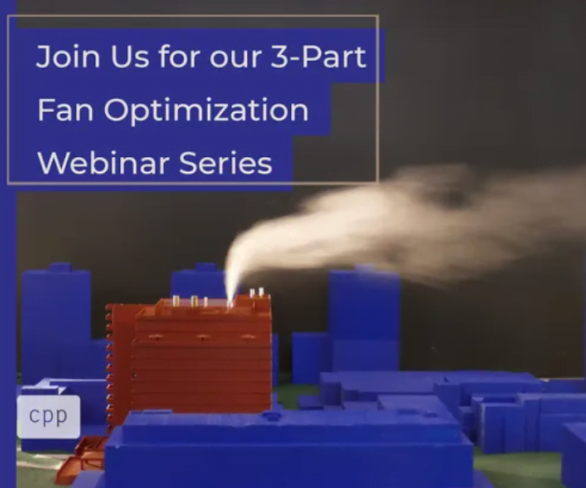News
CPP Wind Webinar 2 of 3: Exhausted with your lab energy costs? Join us to learn about the design of safe and efficient exhaust systems.
Are you wasting energy with your large laboratory exhaust fans? Most facility owners answer yes. As described during the previous webinar, in an effort to reduce the energy consumption of laboratory exhaust systems, it is possible to safely convert existing constant air volume (CAV) fans to variable air volume (VAV) control. However, before converting an exhaust system to VAV and lowering the volume flow rate and exit velocity out of the top of the stack, an assessment must be undertaken to make sure that adverse re-entrainment of the exhaust does not occur when the fan speed, and thus the plume rise, is reduced.
Over the last 15 years, CPP has pioneered the use of VAV to optimize more than 300 lab exhaust systems throughout the world for organizations such as the University of California (Berkeley, Davis, San Francisco, Santa Barbara, etc.), US EPA, and the National Renewable Energy Laboratory. These optimization projects have resulted in the cumulative reduction of 150,000 tons of CO2 into the atmosphere and energy savings of over 225 gigawatt hours.
Join CPP’s 3-part webinar series for an in-depth review and learn how you can reduce your carbon footprint, and take advantage of potential energy savings at your facility. Our webinars on Fan Optimization features CPP Wind’s Brad Cochran.
Fan Optimization Webinar #2: Design of safe and efficient exhaust systems, including advanced wind tunnel modeling methodology and control strategy optimization
Dates: June 8th and June 10th
This webinar will focus on the dispersion modeling and analysis process that is involved in defining the minimum safe volume flow rates, whether you are looking to implement a simple turndown control strategy, a wind responsive control strategy, or a monitored system.
This webinar will focus on:
– Efficient Design of Laboratory Exhaust Systems
– Defining the methodology in defining the acceptable level of re-entrainment
– Selecting the appropriate dispersion modeling technique
– How dispersion modeling to define acceptable minimum volume flow rates
– How to apply the results of the dispersion modeling into the control strategy for the exhaust fans
Bring the proven science of Wind Engineering to the design and operation of your facility. To attend, register here
The final webinar in our 3-part series will be available for design engineers, facilities, maintenance, and EH&S personnel to delve into the details. Dates to be announced.
Webinar Topic #3: Implementation, commissioning/validation, and realization of the energy savings and resiliency potential.
If you would like more information on Laboratory Fan Energy Optimization, please e-mail: marketing@cppwind.com.
About Your Presenter
 CPP Principal and technical expert Brad C. Cochran will bring to each webinar his 25 years of experience conducting wind tunnel, analytical, and Computational Fluid Dynamic modeling for laboratory, hospital, and Data Center ventilation design.
CPP Principal and technical expert Brad C. Cochran will bring to each webinar his 25 years of experience conducting wind tunnel, analytical, and Computational Fluid Dynamic modeling for laboratory, hospital, and Data Center ventilation design.
For more information about CPP and the history of wind engineering, click here to visit our blog.

